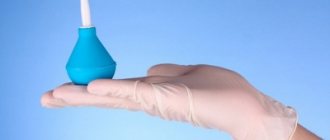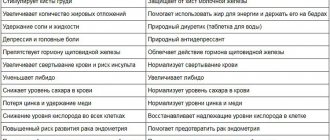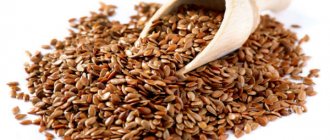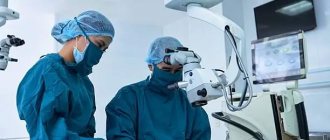Phytoestrogens for women after 50 are worth taking, especially if vegetative disorders still persist: hot flashes, headaches and pressure changes. Phytoestrogens stop them perfectly. After 50, metabolic disorders begin to predominate. Herbal preparations with phytohormones will help in this situation.
The effect of menopause on a woman’s body on the production of female hormones - estrogens
Menopause occurs when the ovarian reserve is depleted and is accompanied by a decrease in the production of female hormones - estrogens. These changes may occur without significant symptoms.
However, in most cases, women have complaints about:
- frequent headaches;
- tides;
- feeling of a lump in the throat;
- decreased muscle tone;
- deterioration in concentration;
- irritability;
- frequent mood changes;
- depression;
- panic attacks;
- dizziness;
- absent-mindedness;
- disruption of the functioning of the genitourinary system;
- sleep disorders.
In addition, drying of the vaginal mucosa and the appearance of itching are noted. The severity of these indications depends on the individual characteristics of the organism.
Menopause is always accompanied by unpleasant symptoms.
External changes
A woman’s unstable psychological state due to hormone imbalance often leads to changes in appearance and the appearance of the first obvious signs of aging. The cessation of the menstrual cycle is often accompanied by excess weight gain and redistribution of body weight. The waist size is rapidly increasing. The skin fades. The previously appeared facial wrinkles become deeper. Reduced estrogen production leads to decreased collagen production and decreased skin elasticity and firmness.
The muscles become flabby and sag. This happens especially quickly during menopause in women who have not previously exercised and have led a sedentary lifestyle.
In addition, the condition of hair and nails worsens. Some women experience increased sweating during menopause. Severe calcium deficiency may occur. This condition often manifests as a change in gait.
Hormonal background
Female hormones are responsible not only for maintaining reproductive function, but also for many other processes occurring in the body. These substances are produced in large quantities in the ovaries. By the age of 45-50, the supply of follicles is depleted, so eggs mature less and less often. This leads to disruptions in the menstrual cycle. Subsequently, menstruation stops and the ovaries stop producing female hormones.
The symptoms of menopause are caused by estrogen deficiency.
After menopause, the main sources of estrogen are adipose tissue and the adrenal cortex. In addition, the production of progesterone, which is responsible for the renewal of the epithelial layer of the uterus, decreases. The hypothalamus, responding to low estrogen levels, tries to stimulate the ovaries. Because of this, malfunctions occur in all organs and systems, which leads to the appearance of symptoms characteristic of the menopause.
Natural springs
Researchers have noticed that many women in Asian countries have significantly reduced symptoms of menopause. This fact was associated with the peculiarities of the national diet, which included a significant number of dishes prepared from soybeans. This product contains a serious concentration of isoflavones.
Main dietary source of phytoestrogens:
- soy;
- offal;
- yoghurts;
- cheeses;
- milk;
- flour;
- oil.
It is better to use sources of phytohormones in food in limited quantities, so as not to trigger a reverse reaction, when excessive intake of phytoestrogens leads to a ban on the production of natural hormones by the body itself.
Read more: 5 best portable speakers from sony
What are phytoestrogens
These are substances of plant origin. They differ in molecular structure from the hormones produced by the human body, but have similar effects.
The most common include:
- kumestans;
- lignans;
- isoflavones;
- saponins;
- resorcinic acid lactones;
- phytosterols.
Phytoestrogens have a non-steroidal structure. They bind to the same receptors as estrogens. This effect contributes to the adaptation of the woman’s body to the restructuring associated with.
Composition and structure (isoflavones, resorcinol derivatives)
Phytoestrogens differ in chemical composition, but have some structural similarities with estradiol, which is a steroid and has phenolic properties. These substances are divided into 2 categories: flavonoids and non-flavonoids. The first includes isoflavones, prenylflavonoids, coumestans, and the second includes resorcinol derivatives, lignans, etc.
Phytoestrogen can affect humans in the same way as estrogen produced by the body.
Indications for use and which agents are less effective
Natural estrogens are recommended for women who have contraindications to the use of hormone replacement therapy. The use of phytoestrogens is acceptable in the treatment of women suffering from hypertension and pathologies of the liver and kidneys.
Taking herbal medicines is indicated if a woman has a genetic predisposition to cancer, because synthetic hormones used for replacement therapy can stimulate the growth of tumors. In addition, phytoestrogens are necessary to stabilize the functioning of the cardiovascular system. They help thin the blood, reduce the risk of blood clots and stabilize blood pressure.
Herbal medicines reduce the severity of depression and help normalize the emotional state during menopause.
They improve the quality of life, quality of sleep, because... reduce the frequency of hot flashes and sweating. The compounds present in herbal remedies stimulate the absorption of calcium and phosphorus, therefore such drugs are prescribed to prevent the development of osteoporosis. The use of drugs based on medicinal plants is indicated to prevent a sharp increase in body weight.
Most phytoestrogens have antimicrobial and antiviral effects, and also strengthen the immune system. These substances help normalize the functioning of the urinary system. Herbal medicines are often prescribed for early menopause, when the menstrual cycle has stopped before the age of 45. They are recommended to improve the general condition after the ovary removal procedure.
Prophylactic use of such herbal remedies by women over 45 years of age is allowed to facilitate hormonal changes in the body. It should be taken into account that components obtained from medicinal plants are less effective than synthetic hormones. As comprehensive studies have shown, the effect of using such drugs does not appear immediately.
Organic Excellence
Phytoestrogens are also used externally during menopause. Cream containing progesterone is useful:
- when menstruation still persists to alleviate the condition;
- in the absence of menstruation to maintain hormonal levels.
The scheme of use in both cases is different, although the drug is available in the form of a cream, it cannot be applied at any time as desired, since it is a pharmacological agent.
In the first case, Organic Excellence is applied on days 12-26 of the cycle, in the second: from the 1st to the 25th of each month. The manufacturer advises applying the product to areas with thin skin.
Progesterone in a herbal preparation is obtained from wild yam root. Among the components in the composition are:
- clover;
- tocopherol;
- grape seed oil;
- chamomile;
- black cohosh;
- evening primrose oil;
- burdock root.
Reviews on iHerb note an improvement in the condition: improved sleep quality, disappearance of hot flashes, change in skin condition.
The product has a pleasant smell and is easily absorbed without leaving a film on the body.
You can watch it here
The principle of action of herbal remedies for menopause
Phytoestrogens compensate for the deficiency of estrogen and progesterone, the production of which decreases during menopause. The compounds present in herbal remedies are quickly absorbed into the blood. By binding to receptors, they help normalize sleep, eliminate hot flashes, increased irritability and other manifestations of psychovegetative disorders. Phytoestrogens reduce the severity of menopause symptoms, but are not able to restore reproductive function.
Rules for admission and treatment
It is better to take medications containing phytoestrogens in the morning immediately after waking up or in the evening before bed. Such drugs have a cumulative effect, i.e. improvement occurs approximately 7-14 days after starting treatment.
Depending on the type of product, the course of treatment ranges from 7 days to 6 months.
Dosage
Phytoestrogens should be used without exceeding the dosage indicated in the instructions or recommended by a doctor. In most cases, 1-2 capsules per day are sufficient for treatment. Suppositories are administered once a day.
A number of contraindications
Preparations containing phytoestrogens are not prescribed to women who have previously been diagnosed with:
- mammary cancer;
- cystic formations of the appendages and uterus;
- liver pathologies;
- disturbances in the biochemical composition of the blood.
In addition, such drugs cannot be used in the treatment of women suffering from progressive or decompensated brain diseases.
The use of phytoestrogens is unacceptable if a woman has an individual intolerance to some of their components.
Side effects of treatment
The use of drugs made from medicinal herbs may cause:
- allergic reactions;
- acne;
- nausea and other disorders of the gastrointestinal tract.
Some of their varieties can cause deterioration in thyroid function and the development of hypothyroidism. In addition, such medications may impair the absorption of zinc, copper, iron and magnesium.
Key Points of Hormone Replacement Therapy
- HRT is effective in the treatment of vasomotor menopausal symptoms and urogenital atrophy.
- Using hormones can reduce other symptoms of menopause. Many women note that joint pain and muscle pain go away, and there are fewer mood swings and sexual dysfunction.
- A woman should decide whether to use HRT based on detailed and evidence-based information provided by her gynecologist. When choosing treatment, you should not rely on rumors and articles from the Internet.
- Preparation, dose, method of application and duration of hormonal treatment are selected individually for each patient, and only after taking hormone tests.
- If HRT is prescribed to women over 60 years of age, the lowest dose will be safer. Hormones are not recommended for the prevention of fractures or coronary heart disease.
- When considering such therapy, you need to know that the increased risk of breast cancer associated with HRT is much lower than that associated with other lifestyle factors - obesity, smoking and alcohol.
Balance of risks and benefits of hormone replacement treatment:
- The benefit will be greater if treatment begins as early as possible after menopause;
- There is an obvious benefit from HRT in women with premature ovarian failure. They should continue therapy until mid-menopause.
It is important to evaluate the benefit-risk ratio annually. If symptoms persist after 5 years of taking hormones, the benefits of continuing treatment outweigh the risks.
ONLINE REGISTRATION at the DIANA clinic
You can sign up by calling the toll-free phone number 8-800-707-15-60 or filling out the contact form. In this case, we will contact you ourselves.
If you find an error, please select a piece of text and press Ctrl+Enter
Content of phytoestrogens in food and soybeans
The largest amount of phytoestrogens is found in beans and soybean sprouts.
Some foods and herbs already contain phytoestrogens.
The following products are important sources of these substances:
- sunflower seeds;
- nuts;
- grenades;
- lentils;
- carrot;
- dates;
- cherries;
- garlic, etc.
The phytoestrogens content in these products is not high enough to sufficiently compensate for estrogen deficiency and suppress the symptoms of menopause.
Table
Comparative amounts of phytoestrogens in food sources (µg/g)
1 µg = 0.000001 g
| Sources | Amount of mcg per 100 g of product |
| Flax seed | 379380 mcg |
| Soya beans | 103920 mcg |
| Soy yogurt | 10275 mcg |
| Sesame seed | 8008.1 mcg |
| Flax bread | 7540 mcg |
| Soy milk | 2957.2 mcg |
| Hummus | 993 mcg |
| Garlic | 603.6 mcg |
| Dried apricots | 444.5 mcg |
| Pistachios | 382.5 mcg |
| Dates | 329.5 mcg |
| Sunflower seeds | 216 mcg |
| Chestnuts | 210.2 mcg |
| Olive oil | 180.7 mcg |
| Almond | 131.1 mcg |
| Cashew | 121.9 mcg |
| Green bean | 105.8 mcg |
| Peanut | 34.5 mcg |
| Onion | 32 mcg |
| blueberries | 17.5 mcg |
| Corn | 9 mcg |
| Coffee | 6.3 mcg |
| Watermelon | 2.9 mcg |
| Cow's milk | 1.2 mcg |
Book by Cassidy A. Potential risks and benefits of phytoestrogen diets. 2003 March
Preparations with phytoestrogens for menopause
Products with phytoestrogens are produced in the form of alcohol infusions, granules, suppositories, tablets, capsules, etc. A rating has already been compiled, which includes the best drugs based on patient reviews. Which composition is best to use can only be determined by a doctor based on the clinical picture.
Pills
The most effective drugs in the form of tablets for treatment are:
- Qi-Clim. Includes black cohosh extract. It has a general strengthening effect, reduces the severity of hot flashes and improves water balance. The drug is contraindicated for epilepsy, liver dysfunction and brain pathologies.
- Remens. Contains extracts of Sanguinaria canadensis, black cohosh, snake venom and cuttlefish gland secretion. The drug relieves anxiety and emotional stress, reduces the risk of developing atherosclerosis, osteoporosis and obesity. Remens improves metabolism, improves immunity and suppresses inflammatory processes.
- Climaxan. Tablets intended for resorption. This effective homeopathic remedy is designed for long-term use and at the same time has a low price. It reduces the number of hot flashes, improves heart rate, stabilizes blood pressure and reduces sweating.
- Femicaps. It is made on the basis of soybean extract, chasteberry, primrose and other components. This homeopathic remedy corrects hormonal levels and reduces the severity of menopause. It is the leading one produced on the basis of the soy component.
Femicaps is a plant-based product.
Vaginal suppositories to relieve symptoms
These suppositories with phytoestrogens are used to stimulate the production of vaginal lubrication, eliminate itching and other unpleasant sensations.
The best drugs produced in this dosage form include:
- Vagikal - suppositories containing calendula flower extract. The use of the drug has an anti-inflammatory effect and eliminates the symptoms of drying out of the mucous membrane.
- Cicatridine - suppositories containing hyaluronic acid, glyceride, as well as oil extracts of calendula, centella, aloe vera and tea tree. Natural components of the product stimulate the production of mucus and help slow down atrophic processes. With long-term use, metabolism improves.
Capsules
Good medications that come in capsule form include:
- Estrovel. Contains extracts of nettle, soybean, vitex fruit, wild yam and a number of other active substances. Long-term use of the drug is allowed. Taking the drug improves mood, reduces the number of migraines and attacks of dizziness, the frequency of hot flashes and suppresses other symptoms of menopause.
- Feminal. Contains red clover extract. This homeopathic medicine is prescribed at the first signs of menopause to facilitate hormonal changes and prevent severe manifestations of menopause. Feminal has a positive effect on the cardiovascular and nervous systems.
- Lignarius. The capsule formulation includes lignans derived from Norway spruce. The phytoestrogens contained in this product are easily absorbed. In addition, it contains tannins and ascorbic acid. The drug suppresses the symptoms of menopause and increases libido.
Lignarius is a modern natural non-hormonal drug that maintains the balance of estrogen in a woman’s body.
Modern approach to hormonal treatment of menopausal women
In 2002, the Women's Health Initiative conducted a study examining the effectiveness of hormone treatment in postmenopausal women. Two groups of patients were identified: one was given a combination of conjugated estrogens (KE) and medroxyprogesterone acetate (MPA), the other was given only KE.
- Patients in the KE and MPA combination group were found to have an increased risk of breast cancer, cardiovascular disease, and deep vein thrombosis, so the study in this group was stopped.
- In women taking only KE, no increased risk of breast cancer or other pathologies was observed.
After the publication of the first results, some gynecologists stopped prescribing hormone therapy, replacing treatment with various dietary supplements, phytoestrogens and even soy preparations, believing that they would suppress postmenopausal symptoms. Naturally, such treatment cannot be effective.
Repeated analysis of the study results revealed the reasons that led to negative results:
- The late age of patients undergoing HRT averaged 63 years, inconsistent with the duration of postmenopause.
- Incorrect selection of progestogen MPA in case of KE overdose.
Whereas, women who were less than 10 years postmenopausal and treated with a well-chosen combination of KE/MPA had a lower incidence of cardiovascular disease than women receiving placebo. And in the group of patients 50-59 years old taking only KE, there was an immediate 50% reduction in the risk of CVD compared to the placebo group.
A meta-analysis of 24 clinical trials confirmed the cardioprotective effects of estrogens. Therefore, the recommendations of the North American Menopause Society as early as 2012 stated that women who begin estrogen treatment during menopause reduce the risk of breast cancer and vascular and heart diseases.
Danish scientists who studied options for preventing osteoporosis in similar conditions also observed a decrease in the incidence of cardiovascular disease, the risk of stroke and breast cancer compared with the control group. But they noted a slight increase in the incidence of deep vein thrombosis.
Deep vein thrombosis
The scientists' final conclusion: the risk of breast cancer associated with hormonal treatment is low. A statement from the International Menopause Society cites less than 1 in 1,000 women over a year of use. The risk increases with postmenopausal obesity, low physical activity or increased alcohol consumption.
Healthy women under 60 years of age (10 years postmenopausal) should not worry about the risks of hormone therapy because the risk of breast cancer does not increase during the first 5 to 7 years of treatment. However, micronized progesterone or dydrogesterone when used with estradiol has been shown to be associated with a better risk profile for breast cancer than synthetic progestogens. The Endocrine Society of the United States has concluded that HRT does not increase the risk of breast cancer when taking the hormones for 5 years or less.
Currently, there are no studies that unambiguously and clearly show the effect of HRT on the development or risk of ovarian cancer. But there are important benefits of HRT in reducing the risk of colon cancer.
Complications of thrombotic embolism increase the risks of taking oral hormones. The greatest risk occurs in the first year of use. Therefore, it is important to evaluate the medical and family history of venous thromboembolism, obesity, and planned surgical treatment before prescribing medications. If an increased risk is identified, transdermal estrogen preparations are selected, and micronized progesterone or dydrogesterone is selected from safer progestins.
Hormones are not used for primary or secondary stroke prevention because they increase the risk of stroke in women over 60 years of age.
Plants and herbs containing phytoestrogens
The following medicinal plants are high in phytoestrogens:
- red brush;
- hog uterus;
- black cohosh;
- sage;
- Red clover;
- arnica;
- pharmaceutical chamomile;
- nettle;
- hop;
- calendula;
- yarrow;
- tenacious bedstraw, etc.
To suppress the symptoms of menopause, infusions that include these herbs are often used.
Red brush is a natural phytohormone that has a positive effect on the hormonal system during menopause.











